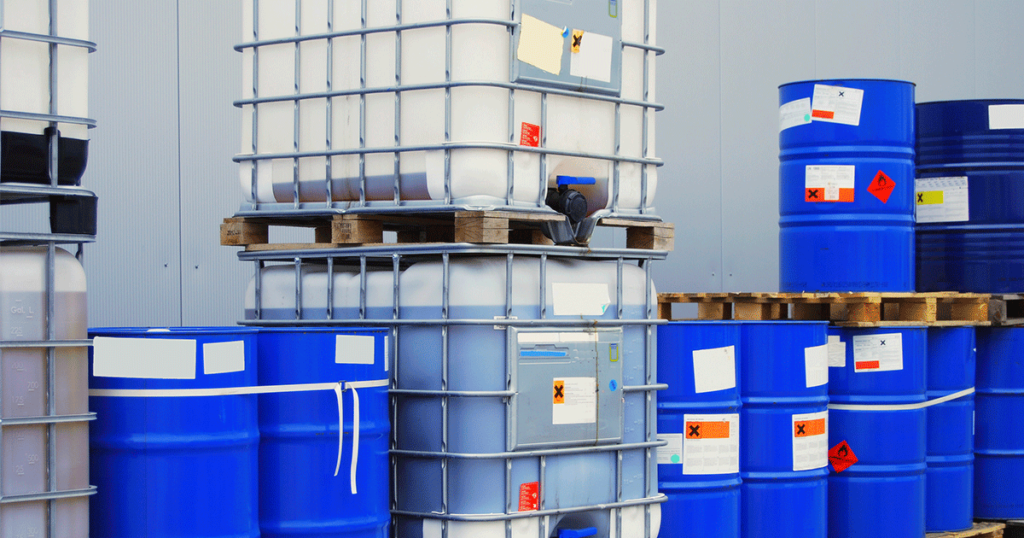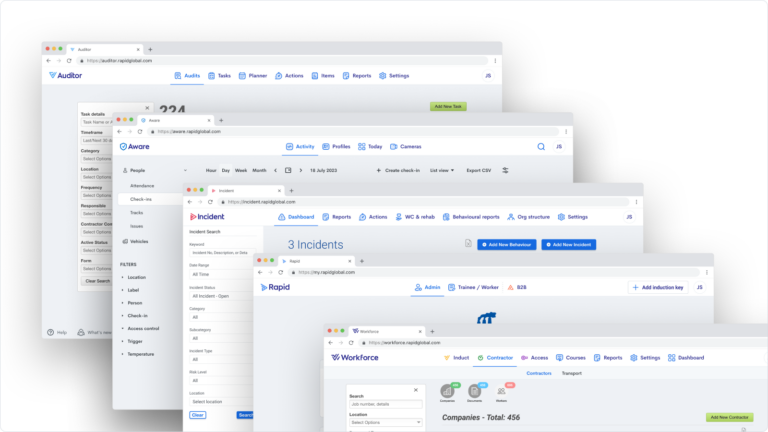

At the core of any business, there should be a sound workplace health and safety (WHS) management system. This is because ensuring a safe working environment is not only a legal responsibility but also “the right thing” and good business practice.
Importantly it should not be just a task to “tick off” as done once and forget. Managing the health and safety of everyone in your workplace including your employees, contractors, and visitors should be at the forefront of all business decisions.
Implementing a WHS management system costs money and time, however it is critical to the success of your business.
Recommended reading: 4 ways to justify the cost of WHS management software.
What is a WHS management system?
A good WHS management system can help make it easy for businesses just like yours to comply with workplace health and safety obligations.
But just what is a WHS management system? It is a framework or plan that clearly outlines how your organisation identifies hazards and manages risks to reduce the likelihood of occurrence of workplace injuries and illness. It should provide employees, contractors, and visitors with clear guidelines for following safety protocols.
What is the difference between paper-based and software-based WHS management systems?
How you document your WHS management system is up to you. Traditionally, the plan would have been paper-based, technology now enables businesses to manage their WHS obligations more effectively and efficiently using software-based systems.

How to choose between paper-based and software-based?
Traditionally, many businesses used a paper-based document management model. While the documents may not have been as detailed as the newer document management systems, they were still systems and could be very effective.
Paper-based systems are tangible, visible, and can be accessed by anyone even if they do not have good computer knowledge. You can easily photocopy the documents and such systems are recognised by law (in fact, the law may require you to have certain documents only in paper format for them to be considered valid).
Paper-based systems can make collaboration challenging and editing difficult. There will come a time when storage space becomes an issue, as well as the costs of stationery and managing documents etc.
In contrast, software-based systems can offer many benefits. They might require an initial investment which you will need to budget for, but they will ensure your data and policies are kept safe via backups or cloud-based systems. You will also be able to promote knowledge sharing via digital records and receive real-time updates when anything changes. Software-based systems also eliminate paper filing and make quality control easier via access controls.
What are the key components of a good WHS management system?
A comprehensive WHS management system will cover the following six components:

1. Safety induction and training
No matter how good your plan is in theory, unless you have adequate induction and training programs, your system will not be effective.
Well-trained staff are one of your biggest assets when it comes to workplace health and safety, whereas poorly trained staff can put an organisation and its people at risk.
Rapid Induct is designed with this in mind – and will simplify your safety induction and compliance training process. With a centralised induction and training for your workforce and contractors, you’ll achieve streamlined onboarding and compliance processes.
2. Risk management
You’ll never eliminate all of the risks in your workplace, so it is important to have strong risk management controls in place.
Risk assessments help to identify workplace hazards. Once a hazard has been identified, it is important to consider whether occupational safety measures are required to minimise the existing hazard. Rapid Risk software makes enterprise risk management simple by giving you one central location to report, store, and follow up on all of your company’s risks.
3. Incident reporting and management
It is also really important that there is a framework for reporting and managing incidents as they occur. Promoting a culture of health and safety in your organisation – where everyone feels safe to speak out if they see something – can save lives and reduce unnecessary costs.
You can easily improve your business’s ability to investigate, gain insights and implement corrective actions with Rapid Incident Reporting software.
4. WHS audits and asset management
Essential to reducing risk, audits are a central part of any robust workplace safety management system.
By registering your assets and conducting audits you can ensure compliance across all areas of your business.
With its fast and straightforward interface, Rapid Auditor empowers you to manage the entire audit lifecycle with ease.

5. Hazardous materials
There is a universal system already in place under workplace health and safety legislation for hazardous chemicals.
The Globally Harmonised System (GHS) is an internationally agreed system of classification and labelling of chemicals and includes harmonised criteria for the classification of:
- physical hazards (e.g. flammable liquids)
- health hazards (e.g. carcinogens)
- environmental hazards (e.g. aquatic toxicity)
Your WHS management system should consider the hazardous materials that are used – or might reasonably be used – in your organisation.
6. Contractor management
Efficiently onboarding and managing your contractors is a key part of fulfilling your WHS requirements.
Rapid Contractor Management enables you manage the entire lifecycle of your contractors from a centralised location.
Why is a WHS management system important?
It is a legal requirement in Australia to manage workplace health and safety. WHS legislation is based on a harm minimisation model – where it is the role of each employer to identify risks in the workplace and implement measures to eliminate those risks.
Therefore, all businesses need to comply with Australian workplace health and safety standards, and non-compliance can lead to potentially serious illness or loss of life, which may result in hefty fines and lawsuits.
WHS is also an important driver of improved productivity in business. If an organisation is constantly dealing with accidents, handling the fallout and suffering lost time, its profitability will be affected. Furthermore, the organisation is likely to experience reputational damage among clients, employees, contractors, and the community.
How will your business benefit from implementing a WHS management system?
A WHS management system can offer many benefits to an organisation. Here are the top seven benefits:
- Improved health and safety performance – reduced workplace illness or injury will lead to less disruption and frustrating downtime
- More profit – achieve reduced costs associated with accidents and incidents, as well as reduced insurance premiums
- Easier path to attracting and securing new business – contractors, suppliers, and investors will all look to organisations that they can trust – and a strong WHS culture is an important indicator
- Increased regulatory compliance – all organisations need to comply with the regulations, whether you like it or not! Why not make it easy for the Board and all managers to efficiently comply with regulations at all levels
- Improved staff relations and morale –finding and keeping the right talent for your business is becoming harder. Having a comprehensive WHS plan will help you to create an atmosphere where staff feel that they work in a caring, fair, and safe environment. As an outcome, you can hopefully avoid losing valuable team members
- Improve business efficiency, productivity – by having a solid WHS management system it will be easy to automate processes and improve efficiencies across all areas of business. The points noted above (increased staff morale, less downtime etc) will lead to improved productivity
- Maintain a positive public image and enhance your reputation for corporate social responsibility – implementing a WHS management system shows that you value the physical, social, and mental well-being of your workforce, helping you to maintain a positive public image
Why Rapid offers the best WHS management system
Rapid’s products are designed to streamline your risk management processes and help manage your safety and compliance. You can easily manage your WHS requirements with Rapid’s modular workforce management software products which are designed to integrate.

Discover how Rapid’s products integrate to save resources and increase efficiency
There is no need to enter your email. Download our interactive datasheet to learn more about Rapid’s helpful integrations.
Download datasheetIs it time to take a step towards improving your WHS management system?
Some of the world’s leading organisations rely on Rapid’s modular workforce management system to improve safety, manage risks, and streamline WHS processes. Are you ready to join them?
Speak to our experts today and request a demo to see how Rapid’s products can help you.







